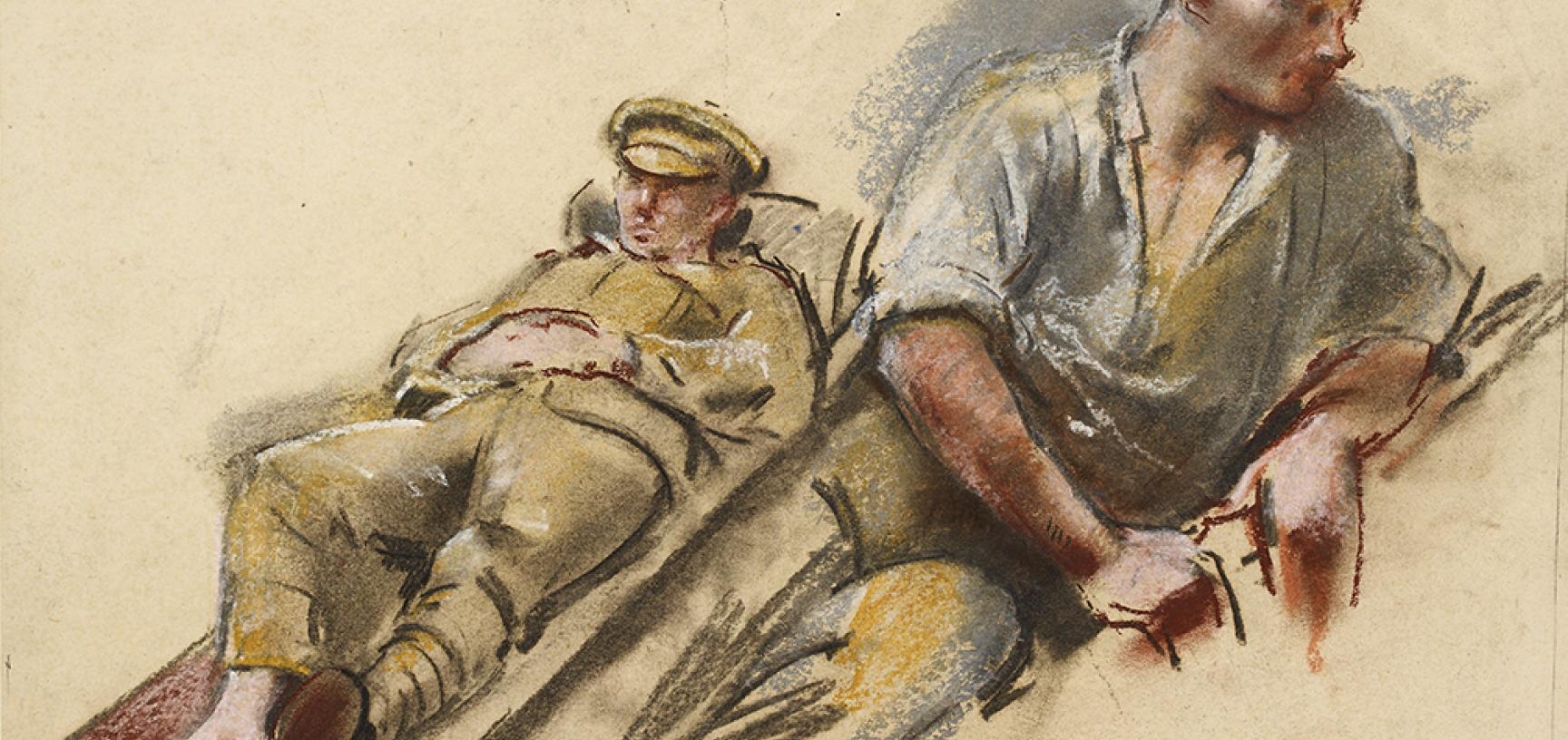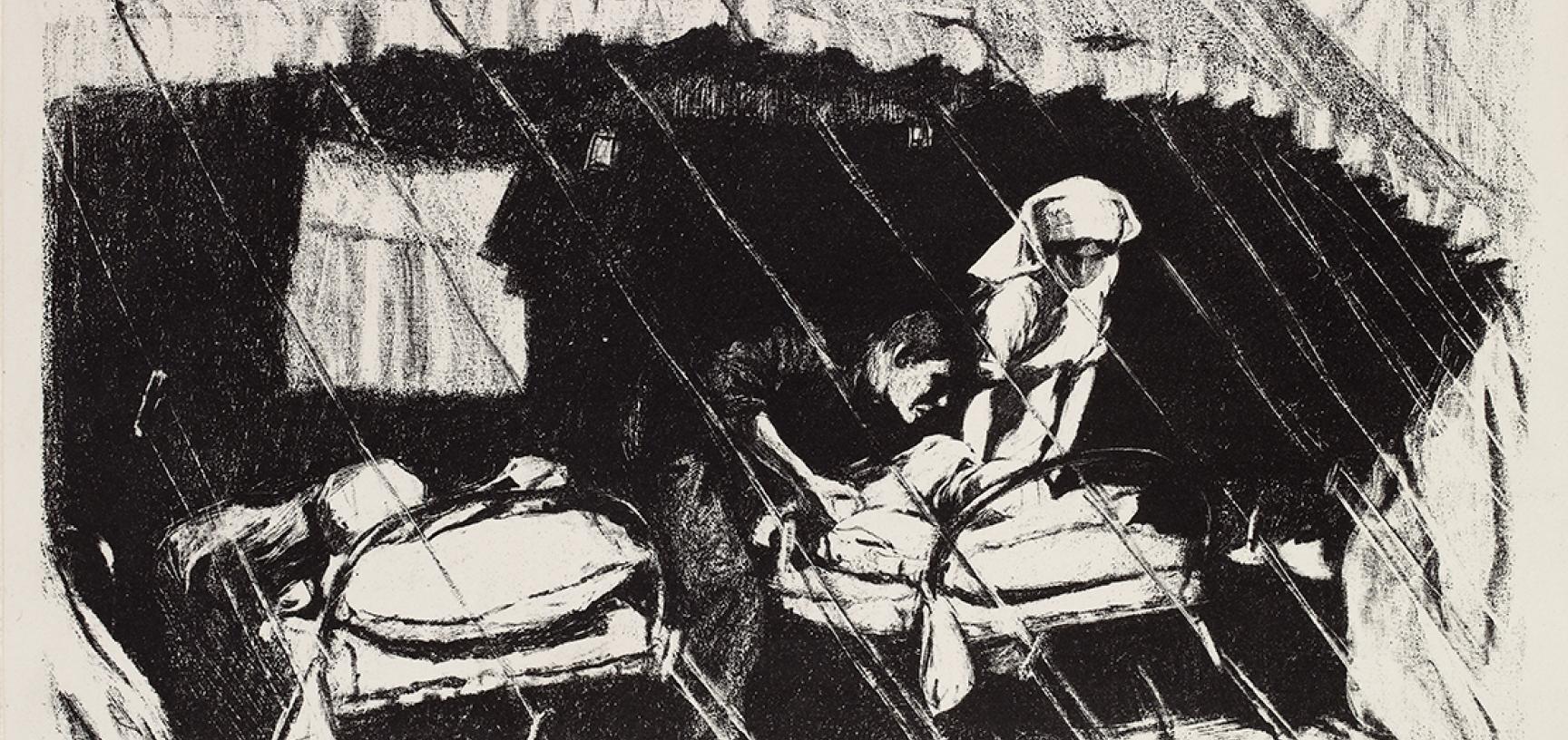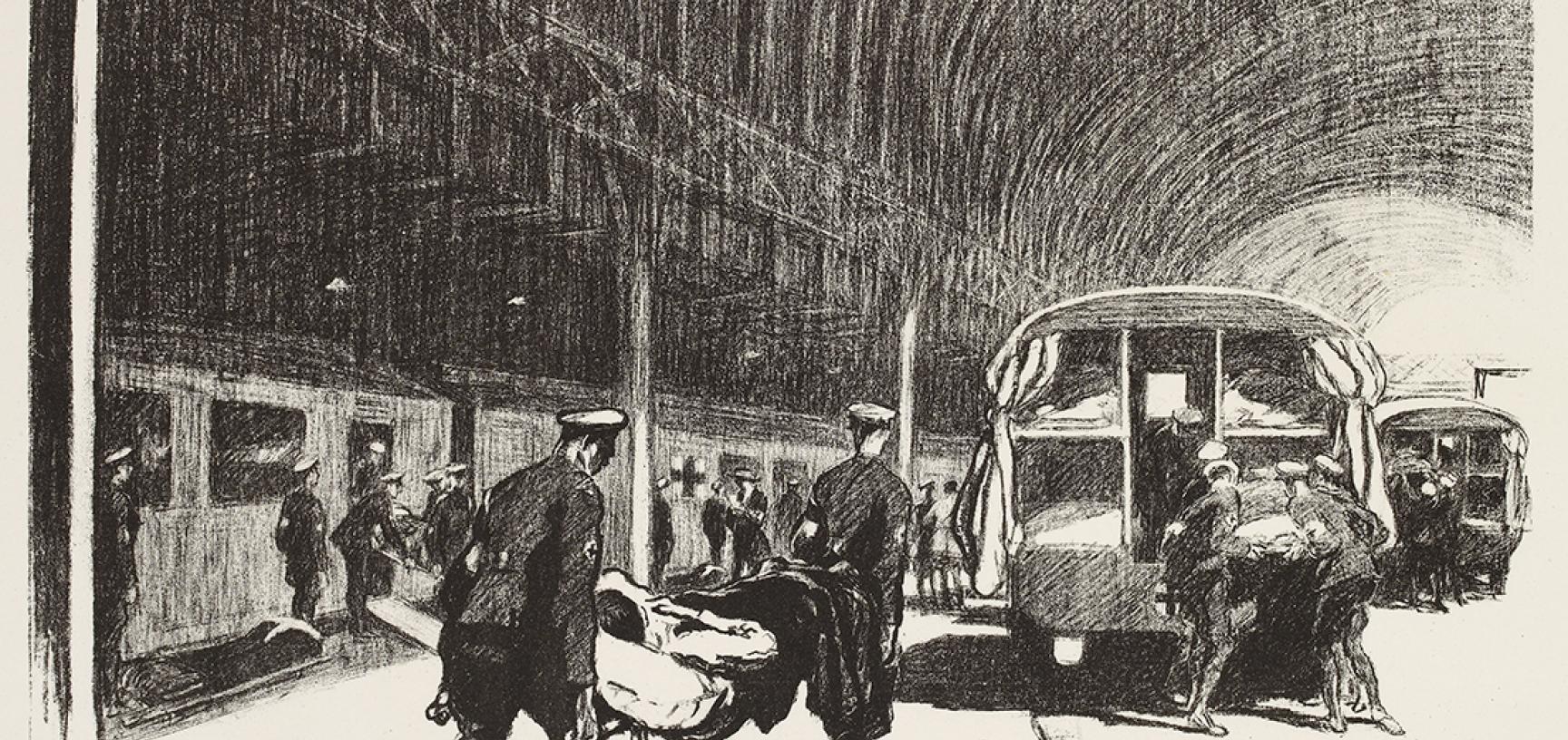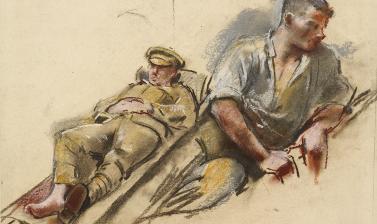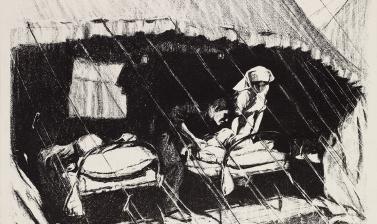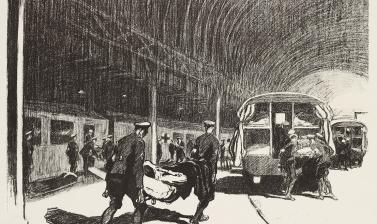TENDING THE WOUNDED

TENDING THE WOUNDED
1. Henry Tonks, Two Wounded Soldiers, c. 1918
Henry Tonks (1862–1937) was a surgeon as well as an important art teacher at the Slade School in London before the war, influencing a whole generation of young artists, including Christopher Nevinson and Paul Nash. In 1916 he joined the Royal Army Medical Corps, becoming an official war artist in 1918. This sketch of two wounded soldiers may have been a study for the large oil painting An Advanced Dressing Station in France (1918), now in the collection of the Imperial War Museum. Tonks later made a memorable series of pastel drawings of soldiers with facial injuries for the Cambridge military hospital in Aldershot and the Queen's Hospital, Sidcup.
2. Claude Shepperson, Casualty Clearing Station in France, 1917
Claude Shepperson (1867–1921) provided a series of six lithographs for Efforts and Ideals on the subject of 'Tending the Wounded'. Henry Tonks was originally asked to supply works on this theme, which would have suited his medical background, but he declined, so Shepperson was commissioned in his place. In contrast to the brutal chaos of the battlefields, these works reflect the seemingly organized process of medical care, from the moments of initial treatment in advanced dressing stations and temporary field hospitals in France – as shown here – to convalescence back in England. Shepperson's images emphasize the quietly efficient but vital role played in war by medical personnel, acknowledging the professionalism of doctors and nurses alike.
3. Claude Shepperson, Detraining in England, 1917
The unloading of injured soldiers from trains must have been a familiar sight at London's railway stations, as the men were returned to 'Blighty'. Born in Kent, Shepperson gave up law to study art in London and Paris. He specialized as an etcher and lithographer, becoming best known as an illustrator of books and periodicals, including Punch (between 1905 and 1920). By the time war broke out he was nearly fifty, but his practised skill in conveying a narrative through figures in action proved well suited to the Efforts and Ideals series. A symbolic lithograph produced by Shepperson during the war is at the British Museum (À Verdun).


